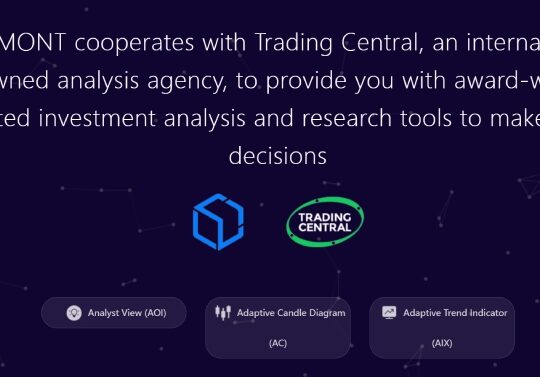Launching an agency takes a huge leap of faith — not only in yourself but also in your offering. So, when things start going well, it can feel like a weight has lifted. But now isn’t the time to get comfortable. In fact, starting your agency may have been the easy part. Now, you have to scale.
As the CEO of an experiential marketing agency and event production company, NVE Experience Agency, we have scaled rapidly since inception, continuing to grow each year. This growth can, in part, be attributed to an expanding understanding around experiential marketing campaigns’ impact on brands’ overall business objectives — and it’s probably why more major brands are adding it to their marketing mix.
But our growth is also a testament to how we’ve strategically scaled, never compromising our processes or the quality of work we deliver. Since moving to a bigger office in Los Angeles in 2016 and expanding our team in New York, we’ve added more than 40 employees and 30 new clients, and we’ve exceeded by more than 100% in year-over-year growth.
Adjusting to growth comes with its own set of challenges, however. You have to evolve processes and keep communication clear if you’re going to continue improving on the caliber of work you deliver to clients.
Staying Nimble Through Growth
In hindsight, our transition seems smooth, but our growth was not without obstacles. Above all, we wanted to retain the agility we enjoyed when we were smaller. Companies that fail to adapt usually fail to thrive. Consider, for instance, that only 60 companies that were on the Fortune 500 in 1955 remain there today.
To us, being nimble means that we can pivot quickly, streamline processes and create more enjoyable experiences for both employees and clients. When it comes to scaling your agency, keep these important considerations in mind.
1. Groom employees to become specialists.
Diverse skill sets are great, but when employees try to play the hero and handle everything at once, they miss key details and slow down processes.
Instead, help your employees become specialists in what they do — this will show them you’re truly invested in their interests and help you cultivate a team of individuals who each bring unique skill sets to the table. Then encourage your employees to trust one another so they focus on their own duties without worrying about whether everything else gets done.
2. Promote collaboration and community.
Nothing kills growth like silos. Create an atmosphere of inclusion and give people from different divisions opportunities to share their recent accomplishments. Don’t limit these engagements to presentations from managers. Instead, encourage people from all parts of your agency to get involved.
We use a platform called TINYpulse to facilitate regular communication. This tool helps answer the challenge of employee engagement on a continuous basis to ensure no issues go unaddressed for long. We don’t lean exclusively on tools to communicate, though. Social rewards and intentional interdivisional dialogue keeps teams engaged. We introduce new employees and celebrate big wins, hold regular all-staff meetings (both physically and virtually) and attend weekly vendor lunches.
3. Structure teams strategically.
When your teams are small, it’s easy to ensure no one falls through the cracks. But as you grow, you’ll need your processes to maintain the same level of employee commitment. We formalized our commitment to the betterment of our people by adding a new role: head of people and community. It’s our unique approach to empowering our people and fostering real relationships between divisions.
Every agency does things differently, but no agency can scale if it isn’t equipped with a forward-thinking team that understands the big picture. Organize your teams in a way that allows them to deliver their best work with minimal delay.
4. Avoid death by meetings.
Meetings kill productivity more often than they empower it. I recommend following the two pizza rule, coined by Jeff Bezos, which states that two pizzas should be able to feed every participant at the meeting. If a meeting requires half the company, trim the attendee list or send an email update instead.
5. Remain flexible.
No matter how great your strategic team structure or role definitions might be, things change. People who were great in one role take on a new position or leave the company. Market demands shift. Big clients might want massive projects and new clients may bring lots of new challenges.
Having a strategy is essential, but don’t get bogged down in the details of defined strategy at the expense of successful scaling. When a great opportunity presents itself, take advantage of it. If every opportunity seems to require a rework, consider whether the existing structure helps or hinders.
6. Invest in current clients first.
Don’t forget about those clients who have been there since the beginning. New resources and new employees should help existing clients, not make them feel like they’ve been outgrown. Continue to communicate with longtime clients, whose word-of-mouth marketing likely contributed to all this growth, and make them feel like valued partners.
We’ve expanded our product and service offerings to meet the increasingly diverse needs of our client base. We’re developing a proprietary approach to help our clients track the conversations around their experiential campaigns, digital integrations to keep clients on top of the latest advancements and new strategic partnerships to provide clients with everything they need for a holistic agency experience.
Scaling can be scary, but for a prepared agency, it’s one of the most rewarding challenges to tackle. By following these tips and learning from our experiences, you can take advantage of new opportunities and scale without losing the identity that brought you success.





